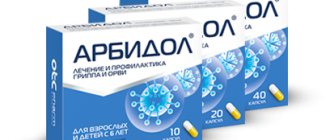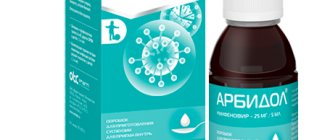Influenza - Data from the World Health Organization (WHO)
Key Facts
- Influenza is an acute viral infection that is easily spread from person to person.
- Influenza circulates throughout the world and can affect anyone of any age group.
- Influenza causes annual seasonal epidemics that peak in winter in temperate climates.
- Influenza is a serious public health problem that causes severe illness and death in high-risk populations.
- The epidemic may have a negative impact on the economy through reduced labor productivity and place undue strain on health services.
- Vaccination is the most effective way to prevent infection.
- Antiviral drugs are available for treatment, but influenza viruses can develop drug resistance.
Review
Seasonal influenza is an acute viral infection caused by the influenza virus.
There are three types of seasonal influenza - A, B and C. Influenza A viruses are divided into subtypes according to different types and combinations of surface proteins of the virus. Among the many subtypes of influenza A viruses, influenza A(H1N1) and A(H3N2) subtypes are currently circulating in humans. Influenza viruses circulate in all parts of the world. Cases of influenza type C are much less common compared to influenza types A and B. For this reason, seasonal flu vaccines contain only influenza A and B viruses.
Signs and symptoms
Seasonal influenza is characterized by a sudden onset of high fever, cough (usually dry), headache, muscle and joint pain, severe malaise (feeling unwell), sore throat and runny nose. Influenza can cause severe illness or death in people at higher risk. The period between infection and illness, known as the incubation period, lasts about two days.
Who is at risk?
Annual influenza epidemics can have a serious impact on all age groups, but children under age two, adults age 65 and older, and people of any age with certain medical conditions, such as chronic heart disease, lung disease, or kidney disease are at highest risk of complications. , blood and metabolic diseases (eg diabetes), or with a weakened immune system.
Transmission of infection
Seasonal influenza is easily transmitted and can spread quickly in schools, nursing homes, businesses and cities. When an infected person coughs, infected droplets become airborne. Another person can inhale them and become exposed to the virus. The virus can also be transmitted through hands infected with the virus. To prevent transmission, people should cover their mouth and nose when coughing with a handkerchief and wash their hands regularly.
Influenza has a global prevalence, with annual incidence rates estimated at 5%-10% among adults and 20%-30% among children. The disease can lead to hospitalization and death, mainly among high-risk groups (very young children, the elderly or chronically ill people).
Prevention
The most effective way to prevent the disease or its severe consequences is vaccination. Safe and effective vaccines have been available and used for more than 60 years. In healthy people, the influenza vaccine may provide moderate protection. However, among older adults, the influenza vaccine may be less effective at preventing illness, but may reduce the severity of illness and reduce complications and death.
Vaccination is especially important for people at higher risk of developing serious flu complications and for people who live with or care for people at high risk.
WHO recommends annual vaccination for the following population groups:
- pregnant women at any stage of pregnancy;
- children from 6 months to 5 years;
- seniors 65 years and older;
- people with chronic diseases;
- healthcare workers.
Influenza vaccination is most effective when circulating viruses closely match those in the vaccine. Influenza viruses are constantly changing, and the WHO Global Influenza Surveillance Network (GISN), a partnership of National Influenza Centers around the world, monitors influenza viruses circulating in people.
For many years, WHO has updated its vaccine composition recommendations twice a year, targeting the 3 most common circulating virus types (two subtypes A and one subtype B of influenza viruses).
World Health Organization (WHO) Fact Sheet No. 211 March 2014
Vaccine INFLUVAK® (Influvac)
Manufacturer: Solvay Biologicals BV, Netherlands
Influenza vaccine, subunit, inactivated
Dosage form:
suspension for intramuscular and subcutaneous administration
Compound:
Influvac® is a trivalent inactivated influenza vaccine consisting of surface antigens (hemagglutinin (HA), neuraminidase (NA)) of influenza viruses type A and B grown in chicken embryos. The antigenic composition of the influenza vaccine is updated annually according to the recommendations of the World Health Organization.
Active substances:
One dose of the vaccine (0.5 ml) contains GA and NA of the following viral strains:
| A/Brisbane/59/2007 / IVR-148, similar to A/Brisbane/59/2007 (H1N1) * | 15 mcg GA |
| A/Uruguay/716/2007 / NYMC X-175C, similar to A/Brisbane/10/2007 (H3N2) * | 15 mcg GA |
| B/Brisben/60/2008, similar to B/Brisben/60/2008* | 15 mcg GA |
* After the name of the strain, the name of the type recommended by WHO for the current epidemic influenza season is given.
Excipients:
potassium chloride, potassium dihydrogen phosphate, sodium phosphate dihydrate, sodium chloride, calcium chloride dihydrate, magnesium chloride hexahydrate, water for injection.
Immunological properties
The vaccine develops specific immunity to influenza viruses type A and B, which is fully formed, as a rule, 14 days after vaccination and lasts up to 1 year.
Purpose
Prevention of influenza in adults and children from 6 months. Vaccination is recommended for all persons and, first of all, for the following categories of the population who are at increased risk if influenza is combined with existing diseases: persons over 65 years of age, regardless of their health status; patients with respiratory diseases; patients with cardiovascular diseases of any etiology; patients with chronic renal failure; patients with diabetes mellitus; patients with immunodeficiency diseases (HIV infection, malignant blood diseases, etc.) and patients taking immunosuppressants, cytostatics, undergoing radiation therapy or receiving high doses of corticosteroids; children and adolescents (from 6 months to 18 years) who have been taking medications containing acetylsalicylic acid for a long time and, therefore, are at increased risk of developing Reye's syndrome due to influenza infection; pregnant women in the 2nd and 3rd trimesters of pregnancy. Pregnant women in high-risk categories should be vaccinated regardless of gestational age.
Contraindications
Hypersensitivity to chicken protein or any other component of the vaccine, severe fever or allergic reactions after previous vaccination with subunit influenza vaccines. Vaccination is postponed until the end of acute manifestations of the disease and exacerbation of chronic diseases. For mild ARVI, acute intestinal and other diseases, vaccination is carried out immediately after the patient has established a normal temperature.
Directions for use and dosage
Dose for adults and adolescents (from 14 years of age):
0.5 ml.
The vaccine is administered once. Dose for children from 6 months.
up to 3 years: 0.25 ml.
Dose for children from 3 to 14 years:
0.5 ml. The vaccine is administered once. For children who have not previously had influenza and have not previously been vaccinated, it is recommended that the vaccine be administered twice with an interval of 4 weeks. Patients with immunodeficiency are recommended to administer the vaccine twice with an interval of 4 weeks.
Mode of application.
Immunization is carried out annually in the autumn. The vaccine is administered intramuscularly or deeply subcutaneously.
Interaction with other drugs and other forms of interaction
Influvac® can be used simultaneously with other vaccines. In this case, vaccines should be administered to different parts of the body with different syringes.
Use during pregnancy and lactation
Current experience shows that Influvac® does not have a teratogenic or toxic effect on the fetus. The Influvac® vaccine can be used during lactation.
Side effects
The vaccine has a high safety profile; allergic reactions, headaches, and decreased platelet levels in the blood are rarely observed. Local reactions may be observed: redness, swelling, pain, hardening at the injection site. There may be a short-term increase in temperature and malaise. Symptoms usually go away on their own without treatment.
Influence on the ability to drive a car and control machines and mechanisms
Influvac® does not affect the ability to drive a car or use machines and mechanisms.
Incompatibility
There are no known cases of incompatibility of Influvac® with other drugs.
Pharmacodynamics and pharmacokinetics
Pharmacodynamics
vaccine is an inactivated vaccine containing purified surface antigens of the most current strains of influenza A and B viruses. According to WHO , its antigenic composition is updated annually.
A single vaccination in adults results in the development of protective antibodies in 95% of patients. Specific immunity appears after 14 days and lasts up to 1 year. The vaccine is approved by the Russian Ministry of Health for the prevention of influenza in Russia.
Since adults are immune to circulating viruses, they are vaccinated once, and children 2 times at intervals of a month. All age groups should be vaccinated annually because influenza are highly variable and the vaccine provides short-term protection.
Pharmacokinetics
Data not provided.
"Influvac" - what is it?
Influvac is a flu vaccine that contains surface antigens of the strains.
Influvac is manufactured in the Netherlands, and the official supplier is Abbott Biologicals BV.
Every year, depending on which type of influenza is expected, the composition of the influvac vaccine . For this reason, the validity period can be found in the developer's instructions. Doctors recommend getting vaccinated annually.
influvac manufacturer
Influvac, instructions for use (Method and dosage)
The vaccine is administered intramuscularly; subcutaneous administration is possible. The dose for adults is 0.5 ml, which is administered once. Persons with immunodeficiency are administered twice with an interval of a month. For children - 0.25 ml (6 months-3 years) and 0.5 ml (3-14 years) once. For those who have not previously been sick or vaccinated, it is administered twice at an interval of a month.
Before administration, warm the drug to room temperature, shake the syringe well, remove the cap and remove air from the syringe. During vaccination, it is necessary to have anti-shock medications. Immunization is carried out in the fall.
Who should get the vaccine?
The Influvac vaccine does not contain living virus bodies, its use does not cause any reactions, therefore, the vaccine can be prescribed to children (6 months and older) and adults.
This influvac vaccine is of great importance for the entire population, but, among other things, the use of the vaccine is indicated for the following categories of people:
- for those who constantly suffer from ARVI,
- elderly people (over 65),
- people with cardiovascular disorders,
- people with diabetes mellitus,
- persons with impaired immune system function,
- children for whom the doctor often prescribes aspirin: there is a risk of contracting Reye's syndrome,
- pregnant women (pregnancy period - from 4 years and beyond).
Reviews about Influvac
Vaccination is recognized by domestic and foreign researchers as the leading means of preventing influenza. First of all, because it significantly reduces the spread of infection and reduces the number of severe complications. This vaccine has been produced since 1950. The company constantly monitors its quality. Extensive application experience confirms the presence of a favorable safety profile. Clinical studies on this subject are conducted every year and serious adverse reactions are monitored and analyzed.
Every 5 years, the company publishes a review devoted to the experience of its use, and over all the years it has been concluded that the vaccine has weak reactogenicity and does not cause significant adverse reactions. It is subunit vaccines , being a modern generation, that have good immunogenicity and weak reactogenicity.
Influvac is characterized by fairly high rates of anti-epidemic and preventive protection. Even if vaccinated people get the flu, it is mild and without complications. All these points are reflected in the reviews.
- “... We do influvac for the flu with the whole family every year. There have never been any reactions, I think that the effect is obvious - everyone at work had the flu (some milder, some more severe) except me.”
- “... We make it for ourselves and our child every year. Everything is fine, no reactions.”
- “... We are getting vaccinated as a family. We don’t get the flu.”
- “... I’ve been vaccinating my daughter every year for 10 years now, and I’ve never had the flu. The youngest son was treated for 2 years in a row - there was no flu or severe ARVI either.”
- “... I did it for children, but I didn’t feel any difference - they still hurt.”
How does Influvac work?
Antigens help elicit a response from the immune system. After 14 days, the corresponding antibodies accumulate in the body. People who get the flu vaccine receive the necessary antibodies along with it.
There is a lot of information that after the vaccine the risk of contracting influenza or acute respiratory infections decreases. From the moment of vaccination until the formation of strong immunity, it will take 14 days, after which the work of the immune system maintains its quality throughout the year. The best alternative may be vaccination at the very beginning of the autumn period.
Why do we recommend buying the Influvac flu vaccine?
Annual flu epidemics have become something familiar and commonplace, but only until someone close to you gets sick.
It’s good if it all ends as it should: in a week, when all the symptoms disappear... But what if it’s the other way around? What if the disease causes serious complications, the treatment of which will be complex, lengthy, and require significant material costs? The Influvac vaccination will help nip this situation in the bud. It minimizes the risk of the disease and its consequences. Every year, more than five hundred thousand people worldwide die from influenza and about five million suffer serious complications. Influenza is an infectious disease of a viral nature, transmitted by airborne droplets from a sick person to a healthy person, who, under the influence of the virus, will also soon become sick. Mass vaccinations against influenza are quite effective: they can reduce morbidity rates by two to three times. This is especially important when it comes to the categories of the population most susceptible to the development of complications: children, elderly patients and people with weakened immune systems.
Flu vaccination in the Russian Federation is not mandatory and is not included in the national vaccination calendar. Despite this, many patients of Doctor Nearby clinics prefer to play it safe and protect themselves and their children from the disease.
Influvac
Please check with the clinic administrators for availability of vaccines.
Winter comes every year, and with it every year comes the flu epidemic. Many thousands of people died from it in the last century.
The flu of today is becoming dangerous not only with death, but also with the possibility of severe complications.
However, using the technologies and innovations of modern medicine, specialists facilitate the course of the disease itself and successfully prevent its occurrence by using vaccination.
“Influvac” - what kind of vaccination is it?
Influvac is an influenza vaccine. It contains killed viral strains; to be more precise, it contains surface antigens of the strains.
First, viruses are cultivated in chicken embryos, they are selected, and they are inactivated using formaldehyde. After which, using special technologies, particles containing antigens are separated from them. All remaining contents are thoroughly cleaned.
The Influvac vaccine is produced in the Netherlands and supplied by Abbott Biologicals BV. Since 1988, the vaccine has been registered and approved for use in the Russian Federation. The vaccine contains antigens of influenza A and B viruses. These particles cannot cause disease, but they can cause lasting immunity.
Every year, taking into account which type of influenza is expected, the composition of the vaccine is updated. Therefore, the instructions specify the season of use. The validity of the vaccine is limited according to the specified time, after this period the effect of the vaccine ceases. Vaccination is recommended every year.
Influvac for influenza is a representative of three-component type vaccines, they contain viruses: A (H3N2); A (H1N1); IN.
Who is recommended to get a flu shot?
Taking into account the fact that Influvac does not have living virus bodies, its use does not cause a reaction, therefore, the vaccine can be prescribed to children from six months of age, as well as to all adults.
The Influvac flu vaccine is necessary for the entire population, but vaccination is especially recommended for the following categories:
- That part of the population who often suffers from ARVI;
- For people over 65 years of age;
- For patients who suffer from heart and vascular diseases;
- For people suffering from diabetes;
- In cases where there is a decrease in immunity (HIV disease, when taking hormonal drugs, immunosuppressants);
- For children who are frequently prescribed aspirin: Children may develop Reye's syndrome;
- For pregnant women in the second half of pregnancy.
How does Influvac work?
Antigens trigger an immune system response in the body. After two weeks, specific antibodies accumulate in the body. In the case of vaccination, the influenza virus enters the body, which has the same antibodies, the shell is destroyed and the viral particle dies.
Conducted in 2000–2001. developments on the drug have shown effectiveness in 90% of cases of vaccine use. This result indicates high immunogenicity, therefore, a high level of body protection.
There is a number of data confirming that after vaccination the incidence of both influenza and acute respiratory infections decreases. Two weeks pass from the moment of vaccination to the formation of immunity, then the effect of immunity lasts a whole year. The best option is to vaccinate in early autumn.
Contraindications
Instructions for use of Influvac stipulate the following contraindications for vaccination:
- In case of individual intolerance;
- In case of allergic reactions to other ingredients of the vaccine;
- In the presence of acute diseases: in the case of acute respiratory viral infections, in case of chronic diseases in the acute stage;
- Children under 6 months of age.
The contraindications that the Influvac vaccine has are typical for vaccines belonging to this category.
In the event that ARVI has mild manifestations, or the disease has minor exacerbations, then vaccination can be performed immediately after body temperature normalizes. It is recommended not to combine several vaccinations on the same day. Otherwise, it is better to perform injections in different limbs.
Use of Influvac for children and pregnancy
Vaccination with Influvac is carried out for children from six months. It should be noted that children respond to vaccination more than adults.
In addition to fever, which is a fairly typical sign during vaccination, they may have a cough and nasal congestion. These manifestations especially apply to infants. This feeling can last for several weeks, as some of the mothers noted.
The flu vaccine Influvac is approved for use in the prescribed manner in case of pregnancy after the second trimester.
It is a purified product, so its use has absolutely no effect on the fetus. If a woman belongs to any risk group, then vaccination is possible, regardless of the timing of pregnancy. Vaccination is also permitted during breastfeeding.
Benefits of flu vaccination at the Miracle Doctor clinic:
- Vaccination is performed only after a thorough examination of the patient by a therapist;
- When vaccinating, high-quality drugs that have mandatory certification are used;
- Carrying out vaccination in a clinic under the supervision of specialists ensures the high effectiveness of the drug and the ability to avoid complications;
- Compliance with all rules and regulations allows you to be vaccinated against influenza with the Influvac vaccine at the Miracle Doctor clinic without any complications or side effects.
The specialists working at the Miracle Doctor clinic always achieve the best possible results for each patient. By contacting us for help, you can always find understanding and avoid many problems.
Take care of your health in advance, get preventive vaccinations!
Use of Influvac for children and during pregnancy
As mentioned above, the vaccine is given to children over 6 months of age. Children are most sensitive to vaccination.
In addition to high fever, the primary indicators for vaccination are cough and nasal congestion. As a rule, this applies to infants. This condition can haunt the vaccinated person for several weeks.
We remind you once again that the vaccine can only be used by pregnant women if they become pregnant after the second trimester.
The use of the vaccine is absolutely safe for the child in the womb. Even if a woman belongs to a certain risk group, vaccination is possible in any case, regardless of the period of gestation of the child. In addition, the vaccine can be used even if breastfeeding.
Contraindications
Contraindications to the Influvac instructions include the following:
- personal intolerance,
- the presence of allergic reactions to other components of the vaccine,
- the presence of diseases that occur in an acute form (with the exception of ARVI in a chronic form),
- children under 6 months of age.
It is worth noting that the Influvac vaccine instructions for use are similar to the instructions for all vaccines of this type.
influvac vaccine
In situations where ARVI has mild symptoms or when the disease is in some stage of exacerbation, then vaccination is allowed only after body temperature has stabilized. Experts advise not to give several vaccinations in one day. In any case, vaccines should be given to different parts of the body.






